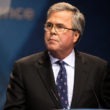THE DIFFERENCE BETWEEN HILLARY CLINTON’S health care plan and the health care plan that would serve as a President Barack Obama’s opening hand with what will certainly be a Democratic Congress comes down to the idea of individual mandates.
The Clinton plan would force everyone into a pool of the insured, as state governments force drivers to insure their cars. Obama’s plan provides a mandate for children only. M.I.T. health care economist Jonathan Gruber predicts that a plan such as Obama proposes, without individual mandates, would cover 23 million of the country’s uninsured and cost approximately $102 billion per year (roughly the cost of a year of Bush’s Iraq War). Add the Clinton mandates and all 45 million of the uninsured would be coveredat an annual taxpayer cost of $124 billion.
Mandates are a policy distinction that make a difference. Yet they are unlikely to be shoehorned into reform legislation by a reluctant Democratic Congress. If the Democrats who control the Congress were resolved to fix the system, they would have supported the single-payer bill introduced by Congressman John Conyers (D-MI) back in 2006 (HR 676). They didn’t.
Adding the individual mandate to a plan that is essentially “Clinton Lite” would put Obama in a better position to approach the Congress, at a moment when constituents are way ahead of their elected officials regarding health care reform. Health care polls as the number one issue of concern among Democrats, number two among Independents, and number four among Republicans.
The fundamental flaw of both plans is dependence on private insurers. Created and funded to provide a service, Medicare pays out 98 percent of the money it collects to cover its clients’ medical needs. Yet private insurers, according to journalist Jonathan Cohn, describe the cost of paying for their clients’ medical needs as a “medical-loss ratio.” In other words, to health insurers the money they spend on their clients’ health care is a “loss.” (Cohn is the author of Sick: The Untold Story of America’s Health Care Crisis—And the People Who Pay the Price.) Compare Medicare’s 98 percent payout with the private carriers’ medical-loss ratio, which according to Cohn rarely climbs above 90 percent and for the big carriers is often held to 60 or 70 percent, and the brutal mathematics of health care controlled by private insurance companies is evident.
In the speech he made in St. Paul, after he had enough delegates to claim the Democratic nomination, Obama reiterated his goal to provide universal health care. Mandatesand a government-run program that would provide a competitive alternative to private, for-profit insurance companieswould move the country in the direction of a “single-payer” system that would be inevitable but for the power of private insurers.THE DIFFERENCE BETWEEN HILLARY CLINTON’S health care plan and the health care plan that would serve as a President Barack Obama’s opening hand with what will certainly be a Democratic Congress comes down to the idea of individual mandates.
The Clinton plan would force everyone into a pool of the insured, as state governments force drivers to insure their cars. Obama’s plan provides a mandate for children only. M.I.T. health care economist Jonathan Gruber predicts that a plan such as Obama proposes, without individual mandates, would cover 23 million of the country’s uninsured and cost approximately $102 billion per year (roughly the cost of a year of Bush’s Iraq War). Add the Clinton mandates and all 45 million of the uninsured would be coveredat an annual taxpayer cost of $124 billion.
Mandates are a policy distinction that make a difference. Yet they are unlikely to be shoehorned into reform legislation by a reluctant Democratic Congress. If the Democrats who control the Congress were resolved to fix the system, they would have supported the single-payer bill introduced by Congressman John Conyers (D-MI) back in 2006 (HR 676). They didn’t.
Adding the individual mandate to a plan that is essentially “Clinton Lite” would put Obama in a better position to approach the Congress, at a moment when constituents are way ahead of their elected officials regarding health care reform. Health care polls as the number one issue of concern among Democrats, number two among Independents, and number four among Republicans.
The fundamental flaw of both plans is dependence on private insurers. Created and funded to provide a service, Medicare pays out 98 percent of the money it collects to cover its clients’ medical needs. Yet private insurers, according to journalist Jonathan Cohn, describe the cost of paying for their clients’ medical needs as a “medical-loss ratio.” In other words, to health insurers the money they spend on their clients’ health care is a “loss.” (Cohn is the author of Sick: The Untold Story of America’s Health Care Crisis—And the People Who Pay the Price.) Compare Medicare’s 98 percent payout with the private carriers’ medical-loss ratio, which according to Cohn rarely climbs above 90 percent and for the big carriers is often held to 60 or 70 percent, and the brutal mathematics of health care controlled by private insurance companies is evident.
In the speech he made in St. Paul, after he had enough delegates to claim the Democratic nomination, Obama reiterated his goal to provide universal health care. Mandatesand a government-run program that would provide a competitive alternative to private, for-profit insurance companieswould move the country in the direction of a “single-payer” system that would be inevitable but for the power of private insurers.






0 Comments